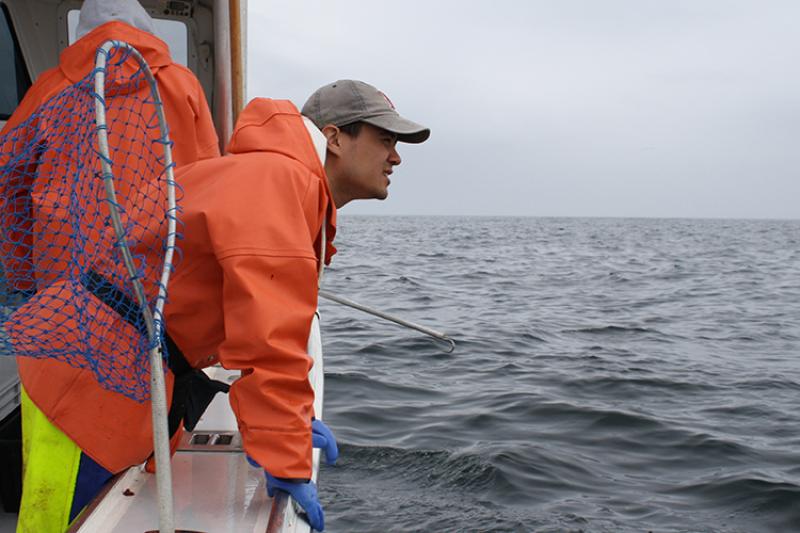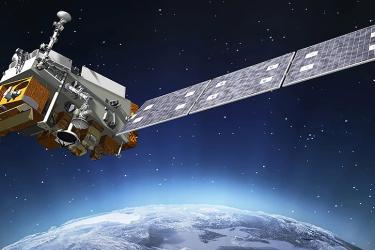Where did you grow up?
I was born and spent my early years growing up in Colorado Springs, Colorado. My parents were both educators, so summer breaks were spent traveling and I was lucky to see much of the continental U.S. via National Park campgrounds. The sheer cliffs and expressive geology that characterize Zion National Park in Utah make it one of my favorite places. The scale of the landscape in western states fundamentally affected my relationship with nature. Even as a child, I could not help but feel humbled against the backdrop of time and geology the West expresses so vividly. These trips and the long hours watching the landscape change along the highway expanded my understanding of the environment beyond the mountains where I had called home. I loved exploring the tide pools of Baja California for octopuses and crustaceans as a kid. As a teenager, I would join my parents freediving for spiny lobsters in the Florida Keys. It was these places and those fond childhood memories that made me pursue a career tied to the sea.
My father’s job as a professor took us to a small town in Iowa for two years. After that, we moved to Amherst, Massachusetts, where I spent my formative high school years. My parent’s professions and Amherst’s proximity to numerous colleges and universities reinforced the importance of curiosity and the education that gives it context.
Where did you go to school and what subject did you get your degree(s) in?
I received dual bachelor's degrees in Marine Biology and Communications from Roger Williams University in Bristol, Rhode Island. I had no intention of pursuing two disciplines, but after taking a series of electives that I enjoyed, I decided to dual major. I enjoyed learning for the sake of learning and thought that having deep background knowledge on other topics could make me a more marketable employee post-graduation.
Tell us a little about how you came to the Science Center.

My first job after college graduation was as an environmental educator at the Chincoteague Bay Field Station on the Eastern Shore of Virginia. In that role and through the combination of classroom and field work, I was able to get middle and high school students excited about marine science. Some of our students had never seen the ocean before and most of them came from landlocked towns in Pennsylvania. The curriculum we had was very engaging. We would take the students on inshore research cruises, trawling along the barrier islands to collect specimens for lab examination. We had guided kayak classes exploring Virginia marshes — that was a lot of fun. Sadly, my position was seasonal and was going to end in the fall. I had to figure out my next career step.
After speaking with a former classmate about career options, I was pointed in the direction of fisheries observers. At that time of year, the next training for new observers was in Alaska. The time commitment was only 3 months so I jumped at the opportunity to see one of the last frontiers. It was my first exposure to commercial fishing and I was introduced to a wide variety of gear types and vessels. One of my funniest memories from this time was wrestling a 6 foot halibut weighing about 300 pounds out of a trawl haul. The crew definitely had a chuckle watching me trying to collect all the necessary observer data on that fish. Another great memory was the four days I spent sitting in a lawn chair on the back deck of a Great Lakes ice-breaking vessel that had been converted to a longliner, watching remote forested islands slipping by as we transited along coastal British Columbia’s breathtaking Inside Passage from Seattle to the Gulf of Alaska.
After a couple of contracts as a fisheries observer in the North Pacific and having to listen to the Red Sox win a World Series over satellite radio 100 miles offshore, I returned to New England as a scallop observer for the Northeast Fisheries Science Center’s Fisheries Sampling Branch.
As an observer for the Science Center, I spent my first two years on scallop boats. I mainly did single-day and 14-day-long trips ranging from Cape Cod to my old stomping grounds around Delmarva — a large peninsula on the East Coast that includes Delaware and parts of Maryland and Virginia’s Eastern Shore. Then in 2010, I started working as an observer trainer. It was here that I was able to pass my knowledge on to new observers. For three and a half years, I trained hundreds of at-sea monitors and observers in fish identification, at-sea safety, and biological field sampling. Training observers was very rewarding and pretty fun. Most of them were recent graduates with lots of energy and ambition. My favorite part was having them come back after some time in the field for a recertification and hearing about their experiences and seeing how they had grown into the job.
A friend who was working with the Cooperative Research Branch knew that I was a technology enthusiast and suggested that I apply for a technical position with them. Although, I enjoyed being a trainer/educator, I felt that it was important to expand my skills and accepted the technical position. I’ve been with the Cooperative Research Branch for six years.
What do you do at the Science Center?
My cooperative research position gives me the opportunity to do lots of different tasks on any given day. During October and May, I spend a lot of time at sea staffing the Bottom Longline Survey. The survey uses commercial fishing boats as a platform to conduct research on data-poor species in rocky habitat. Historically, survey data has been collected by our Bottom Trawl Survey that drags a net along the bottom of the ocean to capture fish.Those fish preferring very rocky habitat may not get caught when the trawl net passes over. They may be hunkered down among the rocks or the survey avoids these areas to prevent net damage. The Longline Survey was created to collect data on fish in these rocky habitats. We collect biological data like fish size, weight, and reproductive status.
One major component of my job is to provide training and technical support to commercial fishermen for the electronic reporting software our group maintains. When fishermen have computer or equipment failures related to our project, I work to help them troubleshoot and resolve their issues, either over the phone or in person. Another major part of my work is to help communicate the work our Branch does, both to fishermen partners and the public. I edit a branch newsletter that goes to our industry partners, help manage our website, and conduct outreach at public- and industry-oriented venues.
I also help to manage some of our projects that investigate how we can use technologies like radio-frequency identification (RFID) and new sensors to collect data that can be helpful to fishermen and scientists. We have worked closely with our colleagues in the Oceans and Climate Branch to deploy and test temperature and depth sensors onboard fishing vessels. We’re trying to see if using “smart” RFID labels can help automate fishing effort tracking in our reporting software program.
What you like most about your position?
What I most enjoy about this job is helping fishermen to resolve technical problems. Being able to work through an issue that has been driving someone crazy and seeing their relief when it is solved is very rewarding. Common issues we deal with are transmission issues and sensors not being recognized. Being a fisherman and running a small business requires a lot of different skills, deciphering an error message after gutting fish all day is not what they have time to do. I’ve worked alongside fishermen for many years, seen how little time they have. That’s why I try to be as responsive to my captains as possible. Building relationships with them helps cultivate trust. I hope that the work I do with our fishing partners and the relationships I build with them help them feel more positive about interactions with our Science Center and NOAA Fisheries.
I really enjoy the variety of tasks that I work on. This position has a good mix of field and office work. I get to experience the thrill and challenges of going to sea while still maintaining a normal work schedule for 10 months a year.
What are some of your hobbies?
All that camping and adventuring as a child stayed with me. During the winter I spend a lot of time skiing in the White and Green Mountains. In recent years, I’ve gotten into venturing beyond the resorts, exploring the side and back country for a more natural and slower-paced skiing experience. The rest of the year I like to mountain bike, hike, and go camping. At home, I have a passion for cooking and gardening.
For more information, please contact Heather Soulen.




